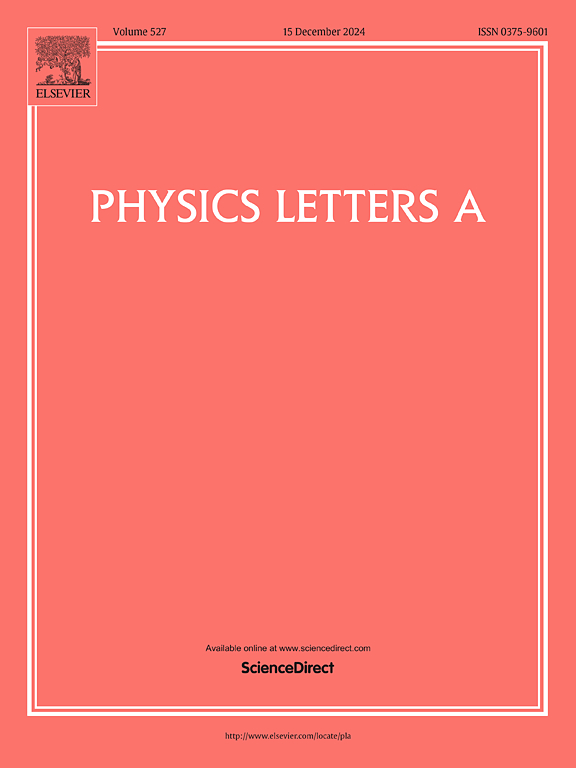Electronic, optical and magnetic properties of Ti-doped and (Ti, VSi) co-doped 4H-SiC: A first-principles study
IF 2.3
3区 物理与天体物理
Q2 PHYSICS, MULTIDISCIPLINARY
引用次数: 0
Abstract
The electronic, optical and magnetic properties of both Ti-doped 4H-SiC and (Ti, VSi) co-doped 4H-SiC are investigated using first-principles calculations based on the density functional theory (DFT). The energy calculations revealed that Ti atoms preferentially occupy Si lattice sites, characterized by the lowest formation energy and optimal structural stability. Ti doping reduces the bandgap of 4H-SiC from 2.22 eV to 2.13 eV, significantly enhancing its optical response to low energy photon fields. Upon (Ti, VSi) co-doping, the bandgap of 4H-SiC decreases further to 0.89 eV and exhibits an indirect-to-direct transition, thereby improving optical absorption in the low energy spectral range. Detailed Analysis of magnetic properties reveals that the local magnetic moment in the co-doped system is primarily derived from electron spin splitting and redistribution in C atoms surrounding VSi, elucidating the synergistic regulation mechanism of magnetism through defects and dopants. The findings give insights into Ti-doped and (Ti, VSi) co-doped 4H-SiC and may be useful for their applications in optoelectronic and spintronic devices.
掺Ti和(Ti, VSi)共掺4H-SiC的电子、光学和磁性:第一性原理研究
利用基于密度泛函理论(DFT)的第一性原理计算研究了Ti掺杂4H-SiC和(Ti, VSi)共掺杂4H-SiC的电子、光学和磁性。能量计算表明,Ti原子优先占据Si晶格位,具有最低的形成能和最佳的结构稳定性。Ti掺杂使4H-SiC的带隙从2.22 eV减小到2.13 eV,显著增强了其对低能光子场的光学响应。(Ti, VSi)共掺杂后,4H-SiC的带隙进一步减小至0.89 eV,呈现间接到直接的转变,从而提高了低能谱范围内的光吸收。详细的磁性分析表明,共掺杂体系中的局部磁矩主要来源于VSi周围C原子的电子自旋分裂和重分布,阐明了缺陷和掺杂剂对磁性的协同调节机制。这些发现对Ti掺杂和(Ti, VSi)共掺杂的4H-SiC有深入的了解,并可能对其在光电和自旋电子器件中的应用有用。
本文章由计算机程序翻译,如有差异,请以英文原文为准。
求助全文
约1分钟内获得全文
求助全文
来源期刊

Physics Letters A
物理-物理:综合
CiteScore
5.10
自引率
3.80%
发文量
493
审稿时长
30 days
期刊介绍:
Physics Letters A offers an exciting publication outlet for novel and frontier physics. It encourages the submission of new research on: condensed matter physics, theoretical physics, nonlinear science, statistical physics, mathematical and computational physics, general and cross-disciplinary physics (including foundations), atomic, molecular and cluster physics, plasma and fluid physics, optical physics, biological physics and nanoscience. No articles on High Energy and Nuclear Physics are published in Physics Letters A. The journal''s high standard and wide dissemination ensures a broad readership amongst the physics community. Rapid publication times and flexible length restrictions give Physics Letters A the edge over other journals in the field.
 求助内容:
求助内容: 应助结果提醒方式:
应助结果提醒方式:


